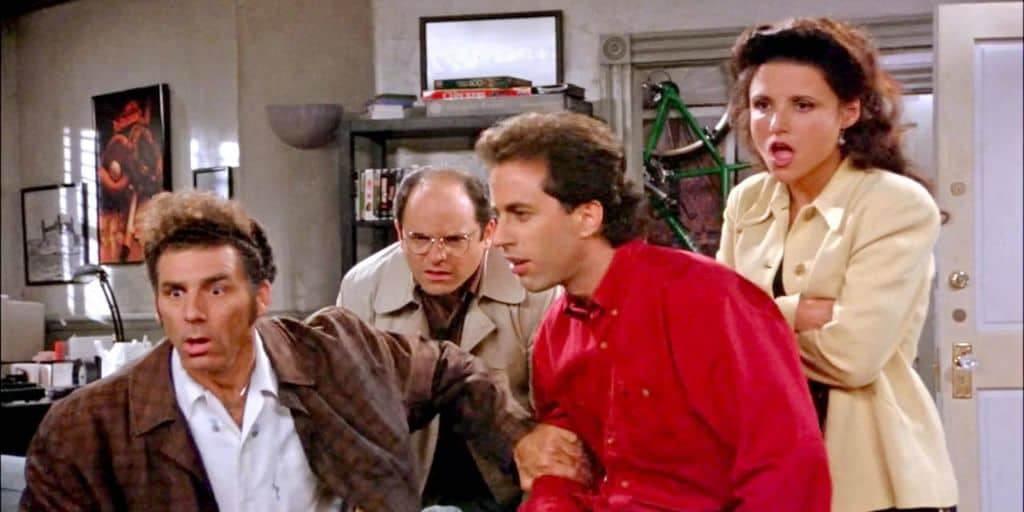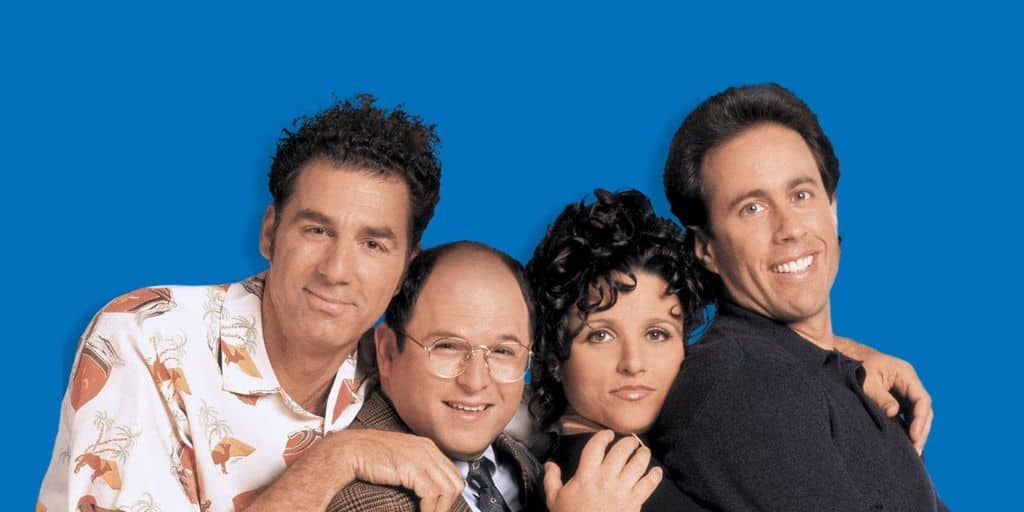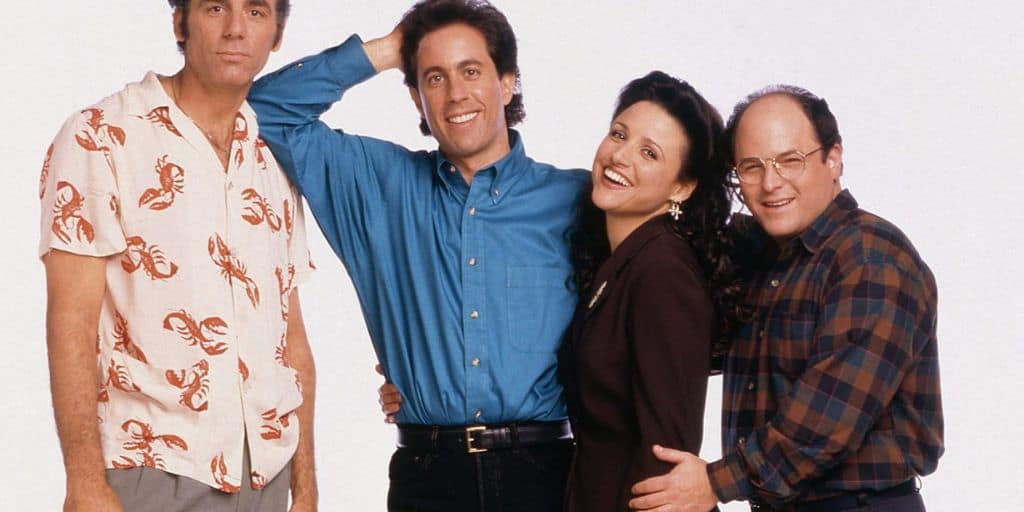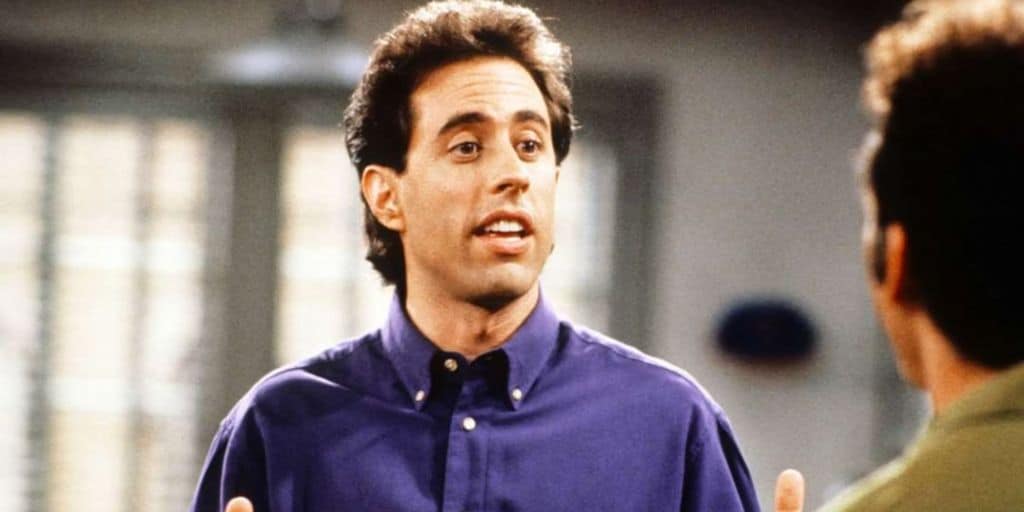The final episode of the NBC sitcom Seinfeld has been the subject of a contentious discussion on its quality for the past 25 years. The Seinfeld finale, in the opinion of many viewers, was the worst possible way for the self-described “show about nothing” to come to an end.
The two-parter is one of the best series finales in television history, and it is very obvious to the astute spectator. Since Jerry, George, Elaine, and Kramer deserved to be punished for their heinous behavior throughout the program, it is difficult to contest the episode’s justification.
It is also difficult to contest the truth that such heinous individuals would never permit any form of punishment to alter the vile core of their nature. In addition to this perfect logic, the Seinfeld finale is a genuinely amusing episode of the show and a fantastic way to wind up the series by giving meaning to everything that transpired in the earlier seasons.
Seinfeld’s last episode, simply titled “The Finale,” is jam-packed with references to earlier seasons of the program. There are so many callbacks that it can be challenging to keep track of who is who in the never-ending line of accusers waiting to name the “New York Four.”
Seinfeld Ending Explained
When Jerry receives a call from NBC informing them that the network’s new president, James Kimborough (Peter Riegert), wants to get down with him to chat about Jerry, the plot of “The Finale” really gets going. In Season 4, Jerry and George were successful in getting their phony sitcom turned into a pilot, which served as the in-universe counterpart of Seinfeld.

Five years and four seasons later, it appears that NBC is now prepared to order a series. George is unhappy but yet delighted, while Jerry is overjoyed by the news. When NBC provides them with a private jet to carry them wherever they like, things only get better. Jerry and George departed on their trip to Paris with Kramer and Elaine. When that happens, things start to get worse.
The plane is forced to make an emergency landing in a small Massachusetts town after Kramer, frustrated by the water stuck in his ear after a day at the beach, mistakenly falls into the cockpit. The pilots must undertake an examination to ensure everything is in working order before they can take off again. Jerry, George, Elaine, and Kramer venture outside into Latham to grab a meal while they wait.
They witness an obese man (John Pinette) being robbed as they wander the city’s streets. Jerry, George, and Elaine simply stand by and make comments about the poor guy’s weight, refusing to assist him. Kramer records the entire episode with his camera in the meantime.
The group is detained for violating the local Good Samaritan Law, which makes it against the law to fail to assist a person in need. For their crimes, Jerry, George, Elaine, and Kramer are duly prosecuted. It’s none other than Jackie Chiles (Phil Morris), the Johnnie Cochran-like defense attorney who has frequently defended Kramer throughout the series.

After realizing that Chile was involved in the case, D. A. Hoyt (James Rebhorn) decided to base his accusations on character witnesses since he knew there would be a media frenzy. The defendant’s “history of selfishness, self-absorption, immaturity, and greed” is what he seeks to demonstrate, according to the accuser.
As a result, there are a lot of people with whom Jerry, George, Elaine, and Kramer have a lot of animosity in the town of Latham. Chiles makes an effort to refute a few of the witnesses. Judge Vandelay (Stanley Anderson) is courted by George’s mother (Estelle Harris).
All for nothing. The New York Four, as they are known in the media, are ultimately sentenced to one year in prison. Jerry, George, Elaine, and Kramer have another pointless talk while they wait to be taken to jail. They start a conversation that is remarkably similar to the one they had in the very first episode of the show. The trial had no impact on them.
They are eager to get back to their previous selves and have no regrets. The trial, where we are carried back to past episodes of the show through the stories recounted by the character witnesses, is the most significant portion of the episode.
Of course, the callbacks don’t begin there: The alias Art Vandelay, invented by George Constanza in the second episode of the series, “The Stake Out,” bears Judge Vandelay’s last name. Every time George has to act a certain way, this false identity is repeatedly brought up.
But when Mabel Choate (Frances Bay) takes the stand, our journey into the past starts. The old woman recalls the episode from Season 7 when Jerry Seinfeld attacked her for a loaf of marble rye, accompanied by a brief flashback. Not just Ms. Choate’s message is complemented by clips from earlier episodes.
The Bubble Boy (Jon Hayman) almost has his bubble burst in Season 4, and Lola (Donna Evans) almost loses control of the broken wheelchair Kramer gave her.
While Robin (Melanie Chartoff) from Season 5 recalls George pushing elderly people and young children out of the way to escape a fire at her son’s birthday party, Sidra Holland (Teri Hatcher) from Season 4 recalls the day Elaine fell on her breasts to test whether or not they were real.
In addition to the infamous Soup Nazi (Larry Thomas), other witnesses include the security guard who detained Jerry for public urinating in Season 3, the police officer who mistakenly thought Kramer was a pimp in Season 7, and others. After kicking her out of his restaurant for a year, the latter was forced out of business by Elaine in Season 7.

Then again, there are the witnesses who don’t have any flashbacks. Even while the performance provides us with plenty of context cues, it might be challenging to identify exactly where they appeared and what their function was. Let’s analyze them in more detail. One of Jerry’s several ex-girlfriends is Marla Penny, a.k.a. “The Virgin,” played by Jane Leeves.
When she learned that her boyfriend and his buddies were competing to see who could go the longest without masturbating, she broke up with him in Season 4. Leslie (Wendel Meldrum), “The Low Talker,” one of Kramer’s ex-wives, was devastated when Jerry consented to wear a puffy shirt of her design on TV and afterward made fun of it.
One of Elaine’s ex-boyfriends accused her of staging an event that happened in Season 4’s “The Pick,” where she purposely displayed her breast on a Christmas card. However, the prosecution in the New York Four trial isn’t just interested in ex-lovers. Authorities, business owners, and previous employers are also scheduled to testify.
In the episode “The Invitations” from Season 7, Dr. Wexler (Victor Raider-Wexler) observed George almost celebrating the death of his fiancée. In a nod to the events of Season 6’s “The Race,” in which George begins dating a female he discovered through the Daily Worker’s advertising, Costanza is similarly accused of being a communist by his former supervisor at the Knicks.
A library officer from “The Library” from Season 3 accuses Jerry of not returning a copy of Tropic of Cancer. In “The Little Jerry” from Season 8, a bodega owner identifies Jerry and Kramer as participants in a cockfighting ring, and in “The Sponge” from Season 7, a drugstore employee tries to discredit Elaine by exposing that she purchased an entire box of birth control sponges.

Mr. Pitt (Ian Abercrombie) and Babu Bhatt (Brian George) are last but certainly not least. In Season 6’s “The Diplomat’s Club,” the latter served as Elaine’s supervisor up until the day he added her to his will. After that, a string of synchronicities led him to believe that she was attempting to murder him. The moment he awoke and saw Elaine approaching him while holding a pillow was the breaking point.
Once more, everything was just a coincidence; she was only attempting to make him feel at ease. In “The Cafe” from Season 3, Jerry persuaded Babu to convert his fusion restaurant into a Pakistani eatery. He ultimately became bankrupt as a result of this choice. Babu is later deported back to Pakistan in Season 4’s “The Visa” due to a postal mix-up. Jerry accidentally received his visa renewal and didn’t return it, it turns out.
Wow, it was a long list! Even then, there are still more callback characters in Seinfeld’s last episode. Just as crucial as the witnesses are the participants in the trial. Some, nevertheless, are more significant than others. There are a number of notable individuals among the numerous friends, family members, lovers, and acquaintances who travel to Latham to attend the trial in person.





